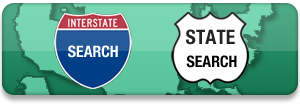This past March, my sister flew to visit us for a spring break vacation. Since her husband couldn’t leave work, she traveled alone from one coast of the U.S. to the other with her two-year-old and infant. A daunting task? Of course. One guaranteed to encounter a few bumps along the journey (turbulence notwithstanding)? Sure. In fact, she was pretty much betting on it. What she wasn’t counting on–what no traveling parents should have to count on–was the lack of hospitality or effort of any sort by the airline personnel to make her multiple flights comfortable. Actually, forget comfortable–she would have settled for bearable. Instead, she was met with a mixed bag of rudeness, apathy, and downright hostility from check-in to the final tarmac.

Unfortunately, I’ve suffered similar experiences while flying with kids. We all know that the going will be rough at times: you may encounter the odd grumpy passenger or the universal nightmare of delays and cancellations. But families spend an average of 30% of their vacation budget on the air travel portion of their vacations. While doing so, it’s not unreasonable to expect the simple (and free) courtesy of a smile, a helping hand (when possible), and a dash of understanding from the airline being patronized.
The Pit Stops family can wholeheartedly endorse the following truly family-friendly airlines, and am happy to explain why.
Southwest Airlines: Southwest Airlines’ motto is ‘fly Southwest to be treated like a person’, and they stand by it. Carrying an infant, folding a stroller, and controlling a toddler at the same time? I’ve been there…in a Southwest Airlines jet way. They notice (and are pros at folding any type of stroller). I love their flexible seating arrangements, and the fact that their reward program truly has no blackout dates. We also love their boarding groups system. Get Southwest Airlines tips!
Alaska Air: If you have the opportunity to fly Alaska, don’t hesitate. In our region, they offer the most family travel deals by far, including their recent ‘kids fly free to Disneyland’ promotion. They also feature regional wines and coffees on-board (complimentary) to help you get through those kid-centric flights. Many of their terminals feature special ‘family’ security lanes to ensure you won’t feel rushed while fiddling with strollers, diaper bags, and babies, and guess what? If you call customer support, you get a real…live…person. I know…crazy, right? Find out how to travel Alaska Airlines with a minor, or get tips for your teen traveling solo!

Allegiant Air: Best for bargain-basement prices when you just need to get somewhere (preferably non-stop). I love that Allegiant makes it easy to price flight options on their one-way calendar pages, where it’s possible to scroll over dates to see listed prices before committing to a flight date and time. They also list pretty tempting vacation packages that compete with all the major airline search engines in price and value.
Frontier Airlines: Finally, an airline that makes itinerary and name change fees more customer-friendly by reducing them by as much as 50% (as of December 2011), a very welcome improvement in the airline fee arena. On an unrelated note, who doesn’t like flying in planes with such cute and cuddly images on the sides and tail? Frontier Airlines expert advice!
Jet Blue: Did someone say ‘free snacks’? Yep, they’re still free on Jet Blue, as is the DirectTV (on personal screens for each passenger) and wi-fi in Jet Blue terminals. Plus, is it just me, or is there more leg room on Jet Blue flights? My kids don’t seem to be kicking the seat in front of them nearly as often as usual.
Is it coincidence that our favorite airlines are not among the heaviest hitters? I think not.
In our experience, smaller, regional, and/or niche airlines consistently offer more costumer-service perks, and regularly go the extra mile for their travelers. Though this post was based on first-hand, personal experience (my favorite kind), I found it interesting to note that this month’s Consumer Reports is in agreement with my findings, siting Jet Blue and Southwest at the top of the airline industry list in terms of overall satisfaction, check-in ease, and comfort.
And for those interested, internationally, our favorites (and those of Pit Stops for Kids reviewers) include RyanAir (seriously cheap for saving money) and Qantas (seriously luxurious).
Have an air travel experience with kids, good or bad? Share in the comments. While you’re at it, what’s your favorite airline for family travel, and why?





 s one part video game, one part scavenger hunt, and one part imaginative play. It can also be considered
s one part video game, one part scavenger hunt, and one part imaginative play. It can also be considered  Pick a quest at the tree (you’ll need to hit ‘accept quest’ for the computer system to ‘know’ which one you’re doing), find the same quest in your booklet, and get going.
Pick a quest at the tree (you’ll need to hit ‘accept quest’ for the computer system to ‘know’ which one you’re doing), find the same quest in your booklet, and get going. u’re much better off visiting the water park at this time and playing MagiQuest during or near mealtimes or in the morning.
u’re much better off visiting the water park at this time and playing MagiQuest during or near mealtimes or in the morning.
 Rules you should know before you go:
Rules you should know before you go: 1. Plan an extended visit. If possible, book at least one week at Disney World or three days (This is especially beneficial if the most expensive single cost of your vacation is getting there and back.) You just can’t do these massive theme parks justice with less time, and you’ll only exhaust yourself trying. (You can’t see it all in a week, either, but a month or more isn’t an option for most families!) A longer visit equals more downtime, and while you may think R&R is hardly the goal at a theme park, without it, you’ll be miserable by Day 3. We made sure to rest every day, and reserved one entire day for simply exploring and enjoying our resort. More time also leads to more inter-family harmony: if you have two days to devote to
1. Plan an extended visit. If possible, book at least one week at Disney World or three days (This is especially beneficial if the most expensive single cost of your vacation is getting there and back.) You just can’t do these massive theme parks justice with less time, and you’ll only exhaust yourself trying. (You can’t see it all in a week, either, but a month or more isn’t an option for most families!) A longer visit equals more downtime, and while you may think R&R is hardly the goal at a theme park, without it, you’ll be miserable by Day 3. We made sure to rest every day, and reserved one entire day for simply exploring and enjoying our resort. More time also leads to more inter-family harmony: if you have two days to devote to  4. Take advantage of shopping opportunities. No, I don’t mean you should get out your wallet every time you’re fed through a souvenir shop, although that’s up to you. I mean that Disney’s shopping areas signify two things: crowd control and extended hours. For instance: Disneyland and
4. Take advantage of shopping opportunities. No, I don’t mean you should get out your wallet every time you’re fed through a souvenir shop, although that’s up to you. I mean that Disney’s shopping areas signify two things: crowd control and extended hours. For instance: Disneyland and 




